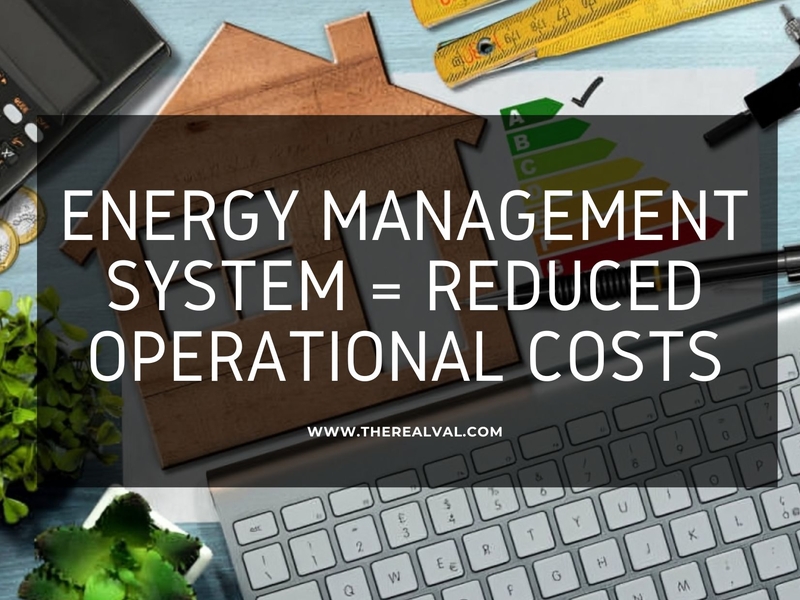In the current competitive business world, keeping operating costs low has become more important than ever. Energy costs take up a big part of the budget, especially in industries like manufacturing, commercial real estate, and industrial operations. That is why many companies are now looking for smart ways to use less energy and save money. One great solution is an Energy Management System aka EMS. An EMS helps businesses watch, manage, and improve how they use energy and the catch is- all this is in real time. This not only cuts down on energy bills but also helps the company become eco-friendlier.
What is an EMS?
An Energy Management System (EMS) is a mix of software, hardware, and rules that helps track how energy is used in a business. It collects real-time data from meters, sensors, and other equipment, then studies this data to give useful tips for saving energy. The main aim is to use energy in the best way possible without affecting how well things work. An EMS can be used for quite a lot of things like lighting, HVAC systems, machines, and even data centers. This helps businesses cut energy costs while staying efficient.
How EMS Reduces Operational Costs
- Real-Time Energy Monitoring: One big benefit of an Energy Management System is that it lets businesses watch their energy use in real time. Many companies don’t know exactly where or how energy is being used, which can lead to waste. An EMS helps spot problems like machines running when they shouldn’t or energy spikes at odd hours. By finding these issues early, companies can fix them before they become expensive, saving energy and lowering bills.
- Demand-Based Energy Usage: The cost of electricity often changes depending on the time of day and how much demand there is on the power grid. An EMS helps businesses plan their energy use to match these changes. For example, they can move energy-heavy tasks to times when electricity is cheaper or turn off less important equipment during peak hours. This smart planning, also called demand-based energy usage, helps cut costs and use energy more wisely.
- Predictive Maintenance and Asset Optimization: An EMS doesn’t just track how much energy is used; it also keeps an eye on how well machines and systems are working. If a machine starts using more energy than usual, the EMS can warn the team before it breaks down. This is called predictive maintenance. Fixing problems early means fewer breakdowns, less downtime, and longer life for the equipment. All of this save money in the long run.
- Benchmarking and Continuous Improvement: Another helpful feature of an Energy Management System is benchmarking. This means comparing how much energy is being used now with past data or with other buildings or departments. Businesses can use this info to see what’s working and make steady improvements. For companies with many locations, it’s easy to copy the best energy-saving practices across all their sites.
- Regulatory Compliance and Incentives: Governments are asking businesses to follow stricter energy rules. An EMS helps companies meet these rules (like ISO 50001) by keeping proper records and showing proof of energy savings. Also, many government and utility programs offer incentives, rebates, or tax credits to companies that save energy or use smart energy tech. An EMS helps businesses take advantage of these benefits while staying compliant.
Industries that Benefit from the Implementation of EMS
- Manufacturing: EMS helps monitor and optimize energy usage across high-load machinery like motors, furnaces, and compressors. It also supports predictive maintenance, reducing downtime and improving operational efficiency.
- Offices: Office buildings benefit from automated HVAC and lighting systems that adjust based on occupancy and time of day. This reduces utility bills and improves tenant comfort and building value.
- Healthcare: Hospitals and labs run 24/7 and rely on uninterrupted power for critical equipment. EMS ensures system reliability, energy efficiency, and compliance with strict operational standards.
- Retail: Stores and malls use EMS to optimize refrigeration, lighting, and HVAC, especially during peak and off-peak hours. It helps lower energy costs and prevents losses from equipment failures or temperature fluctuations.
- Hospitality: Hotels and resorts use EMS to automate room controls and track energy usage across facilities like kitchens and spas. This maintains guest comfort while lowering operational expenses.
How to Implement an Energy Management System?
- Conduct an Energy Audit: Begin by checking how your business uses energy right now. This is called an energy audit. It helps you find out where energy is being wasted and shows what needs to be improved. This gives you a starting point to measure future progress.
- Select the Right EMS Solution: Pick an Energy Management System that suits your business size, type, and industry needs the best. Make sure it works well with the systems you already have and can grow with your company over time.
- Install Smart Meters and IoT Sensors: Set up smart meters and IoT sensors to collect live energy data from different machines or areas. These tools send information to your EMS, so you can see and control how energy is used in real time.
- Set KPIs and Energy Goals: Decide on clear Key Performance Indicators like energy usage per unit, lower peak usage, or total money saved on bills. These goals help track how well your business is doing and where it can improve.
- Train Staff and Integrate Processes: Teach your team how to use the EMS and make it part of daily work routines. When everyone understands how the system works, it's easier to turn its insights into real energy and cost savings.
The ROI of Energy Management System: A Long-Term Investment
Setting up an Energy Management System (EMS) can cost money upfront for the hardware, software, and setup. But in most cases, businesses start saving enough to cover the cost within one to three years. These savings come from lower energy bills, better-performing equipment, and fewer unexpected breakdowns. Besides the money, EMS also helps boost a company’s image, meet sustainability goals, and get ready for future energy needs. So, an EMS is a smart, long-term investment.
In recent times, energy prices keep changing and more businesses are being held responsible for their environmental impact. An Energy Management System helps companies deal with these challenges using real-time data and smart energy use. It gives full control over one of the biggest business cost, which is energy. For any organization that wants to stay competitive, strong, and eco-friendly, using an EMS should be imperative
At RealVal, we specialize in underwriting investments that drive long-term value. Whether you're evaluating the ROI of a new EMS or planning a full energy optimization strategy, our team of experts can help you make informed, financially sound decisions.
Get in touch to let us underwrite your next energy-saving initiative- info@therealval.com
Trending





